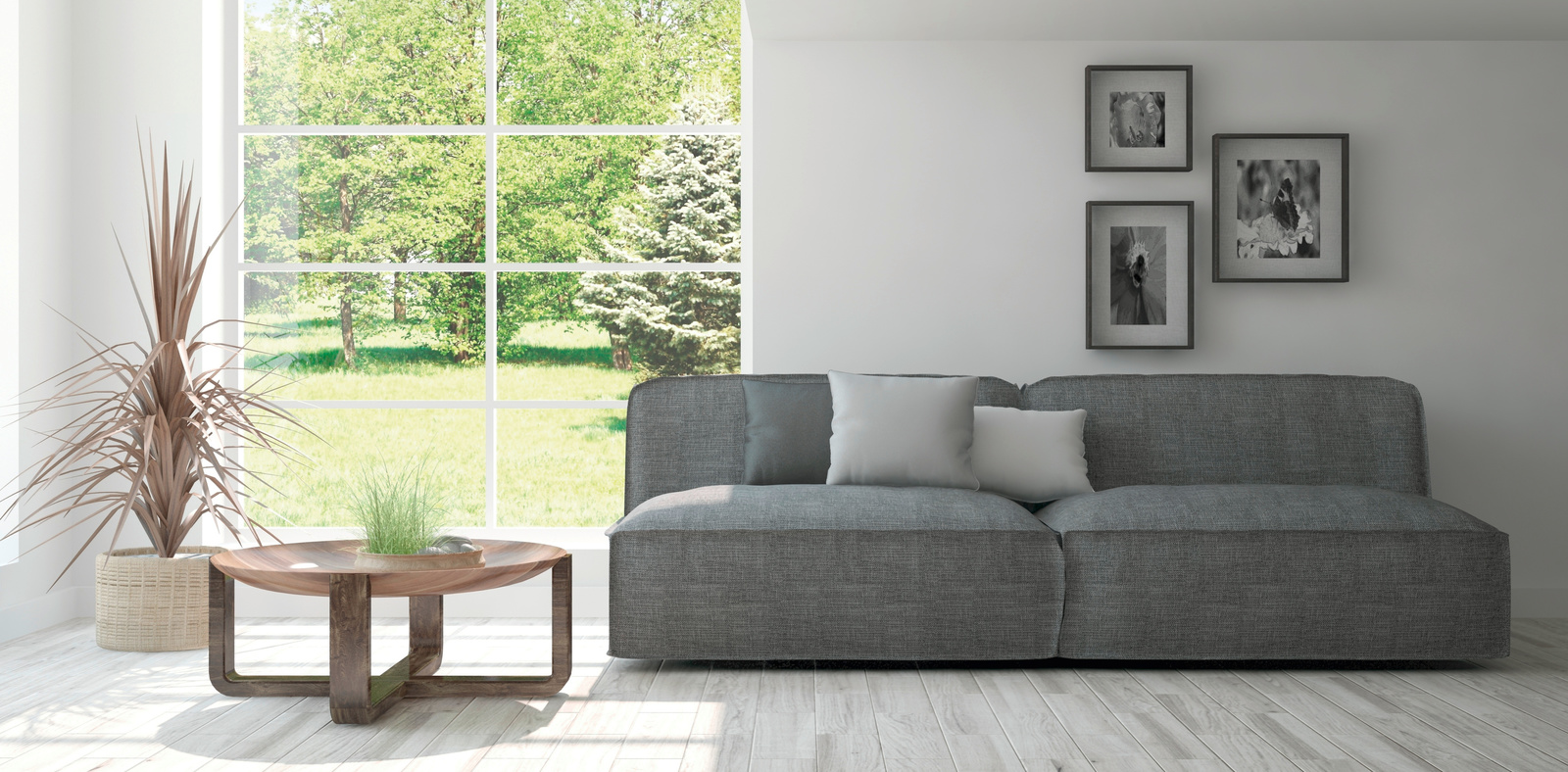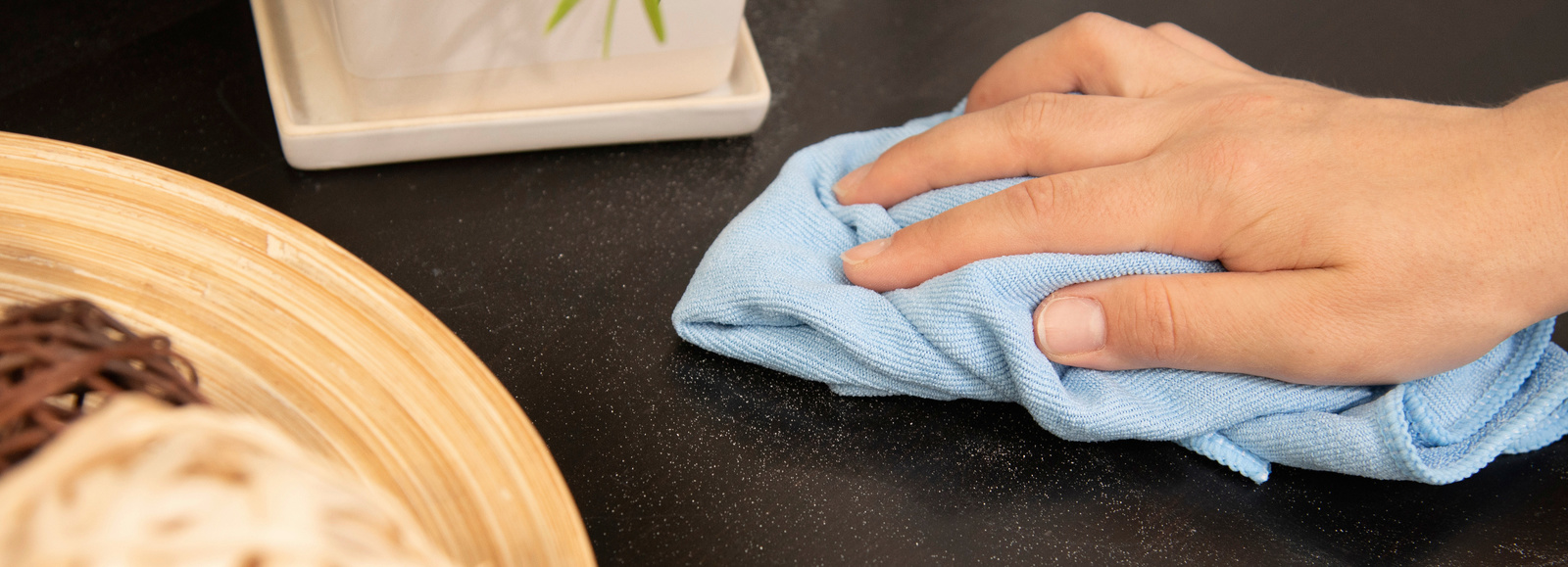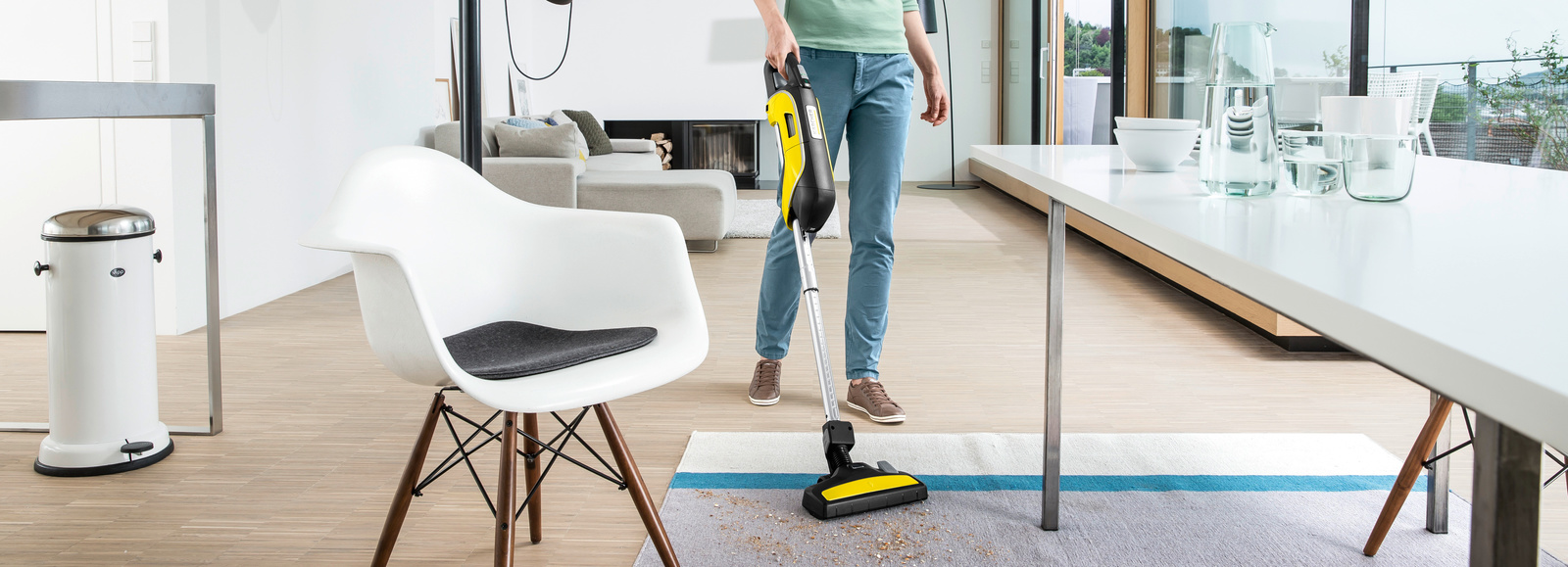Cleaning living spaces: Tips for tackling dust and dirt
Well-cleaned bedrooms and living rooms contribute significantly to your comfort within your own four walls. With tidiness and the right tips, you can keep your home clean all the time, with minimum effort.

Tidy house, tidy mind
Cleanliness and tidiness are often said in the same breath; however, they are topics that should certainly be considered separately. Trying to clean an untidy house is unnecessarily difficult and takes a long time, which is why we recommend that you have a thorough tidy-up before starting to clean.
Tidying properly
The easiest way to keep a room tidy is by regularly putting things away. Tidying up is easier in short bursts, which prevents the dreaded chaos appearing in the first place. You should tidy things that can be quickly put away straight away, instead of putting them on the to-do list or cleaning plan. All objects should have their place in the house. Suitable containers, such as boxes or baskets, can help keep surfaces free, but must also be put away themselves from time to time. Don't overfill horizontal surfaces such as tables, shelves and window sills, otherwise you'll need a lot of patience later to put it all away.

Minimalism
Whole books have been written about the hot topic of minimalism, yet just a few simple reflections can have a great effect. The fewer things you have, the less you have to put away before cleaning and the easier it is to keep things tidy in the long run. It sounds almost too easy, but putting it into practice is often where everything falls apart. As with tidying up, you should approach sorting out in small steps and not try to do everything in a single weekend.
It may help to question why you need to keep your possessions: Do we really want to keep all our holiday souvenirs on the shelf? Do I need to get rid of all those old crime novels? When was the last time I wore that piece of clothing? You don't always need to have a radical clear-out like the organisational expert Marie Kondo – even just getting rid of a few objects can make a tangible difference to how quickly you can get through your weekly dusting. After you have got rid of a few things, tidying up becomes noticeably easier.
Easy-care furniture
When choosing furniture and floor coverings, you should keep in mind how these are cleaned. Open shelves looks very chic, but provide many surfaces on which dust can settle. Closed cupboards and drawers are easier to keep clean, as long as you don't fill them too full. Some things need sufficient storage space, such as having a shelf for the post instead of putting it on the dining table. Objects used particularly frequently should have their place in the house and be easily accessible. The material and design of surfaces also play an important role. On some furniture, every speck of dust is visible: Dark, smooth surfaces that are all one colour get grubby particularly quickly. Tip: Dust on natural wooden surfaces or wood-effect surfaces is generally less visible.
Cleaning tasks in living and sleeping spaces
Tips for dusting
Imagine the scene: The house is gleaming, freshly cleaned from top to bottom, the windows and doors stay closed after being wide open to ventilate the place – and yet, a very fine layer of dust still settles on furniture, house plants and the floor only a short while later. Sadly, wiping, sweeping or vacuuming is often only a preventative measure, since it is inevitable that dust will gather wherever people live.

Where does dust come from?
Looking at dust close-up under a microscope will tell you that it's a whole mix of differently sized particles, which mingle and combine with each other. Everything is there, from dead skin cells to carpet fibres, pollen, pet hair and fine dust – quite the banquet for unwanted guests such as booklice, dust mites, bacteria and mould spores. Depending on the size and weight of the particles, the dust will either be carried into every corner by the circulating air or swirl around constantly without settling anywhere.
The composition of household dust varies depending on the room, location of the residential building, number of people living there and their lifestyle. We carry the majority of dirt into our homes on our shoes. It is therefore worthwhile having open mesh, coconut or textile mats or rubber sections to act as dirt traps. When positioned in front of entrances, they catch the majority of the dirt which would otherwise end up in the hallway or other living spaces. Soot, fungal spores and pollen are also carried into the house in the air.
Vacuum first or dust first?
Opinions differ on the question of whether it's better to dust first or vacuum first. If you vacuum first, dirt from dusting furniture and objects may end up on the clean floor. On the other hand, vacuuming always stirs up dust, which may end up on the freshly wiped surfaces. In most cases, it seems to make the most sense to dust first and then vacuum the floor. Wiping causes other dirt, such as crumbs and hair, to fall to the floor, which can then be vacuumed up. If you open the windows to create a through-draught whilst vacuuming, a majority of the dust stirred up will be carried straight outside.

Dusting correctly
- Ideally, dust should be removed with a dry, soft cotton cloth. Alternatively, there are special dust cloths, which are electrostatically charged and therefore pick up dirt more effectively.
- If you fold the cloth twice, you have eight equal parts of the cloth, which you can use one after the other to dust. This means that the cloth can be used for longer before it has to be washed.
- Don't forget to dust small surfaces, such as picture and door frames, radiators and leaves of house plants. When doing so, always work systematically from top to bottom.
- Dusting with a damp cloth might seem logical at first, but this method often just smears the dust around. If you still want to dust with a damp cloth, the cloth shouldn't be too wet, otherwise you will leave water behind on the surface.
How often should you dust?
How often you dust primarily depends on the level of cleanliness you personally require. However, living circumstances also play an important role. If you live on your own and spend a lot of time out of the house, the feather duster will need to come out less often than with a family of four. As a general rule, most households should dust once a week. The dust will still be visible, but the amount of dirt is still acceptable for most people.




















